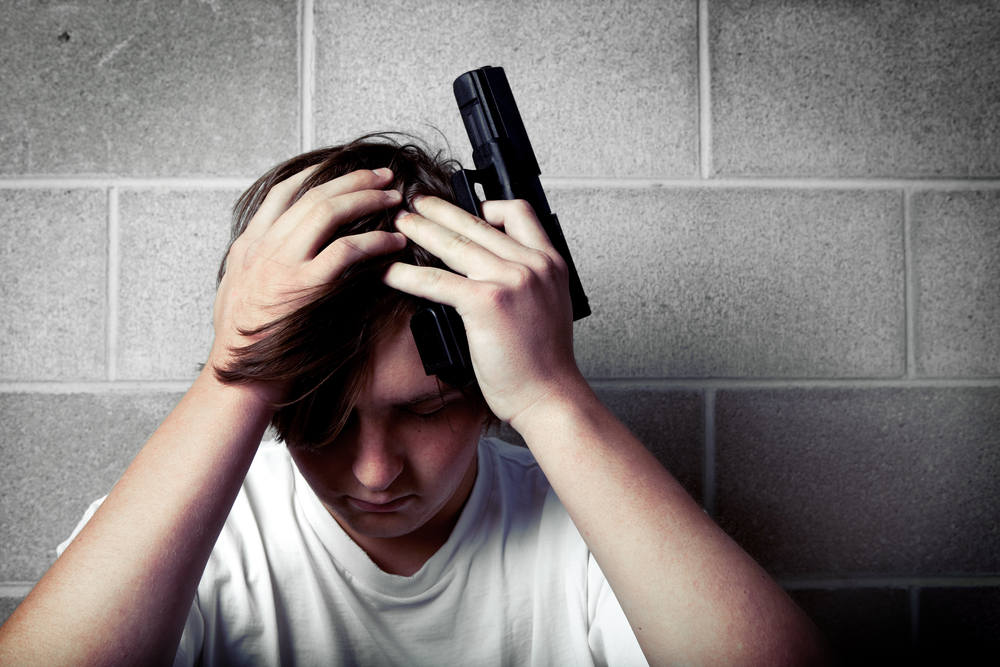![]() “We have tens of thousands of kids who will never grow up to be who they were meant to be. You have a central role in changing that. The cause of combatting gun violence is not just for a lawyer or lawmaker or prosecutor — it’s for YOU.” —Michael Feuer, Los Angeles City Attorney
“We have tens of thousands of kids who will never grow up to be who they were meant to be. You have a central role in changing that. The cause of combatting gun violence is not just for a lawyer or lawmaker or prosecutor — it’s for YOU.” —Michael Feuer, Los Angeles City Attorney
Conversations about firearms have been historically entrenched in political debate with little regard for gun safety, a life-saving, nonpartisan issue. There’s a serious and immediate need for effective strategies to reduce all forms of gun violence, including mass shootings, “urban gun violence,” suicide and unintentional child shootings.

Johanna Thomas
Approximately 4.6 million children live in homes where guns are improperly stored, both loaded and unlocked. This is especially important because firearms are the second leading cause of death for all children in the U.S. and the leading cause of death for black children. In fact, nearly 1,500 children in the U.S under the age of 18 are killed with guns every year — 800 homicides, 600 suicides and 100 unintentional, according to the Centers for Disease Control and Prevention.
The risk of death when a gun is left unsecured is equivalent to other household risks that society recognizes — swimming pools, unsecured prescriptions, household chemicals, etc. While school and mass shootings are more likely to dominate the media, the reality is that 90% off all child-involved unintentional shootings occur in the home, such as the 4-year-old from Virginia who unintentionally shot his 2-year-old brother after accessing an unsecured gun kept “high in an upper cabinet” or the 13-year-old from New York who took one of his father's unlocked, loaded guns and shot himself after school. Unsecured weapons, from their own homes or a friend’s, are also the culprit in more than three-quarters (78%) of incidents of gunfire on school grounds.
The Be SMART for Kids program was developed by the organization Moms Demand Action for Gun Sense in America in order to educate people on measurable steps that can be taken to reduce gun violence. The program is founded on two really simple ideas: 1) people — parents, adults and gun owners — want to keep children and families safe from gun injury and death and 2) the onus of gun safety is on adults, not children. The basic premise of the program is nonconfrontational, strengths-based and steeped in empowerment.
The SMART acronym is easy to remember and implement:
- S — Secure all guns in your home and vehicles
- M — Model responsible behavior around guns
- A — Ask about the presence of unsecured guns in other homes
- R — Recognize the role of guns in suicide
- T — Tell your peers to be SMART
Appropriately secure guns
Approximately 13 million U.S. households contain at least one child and one gun, and the single most important step someone can take to prevent an unintentional gun injury or death is to secure their guns, locked and unloaded with the ammunition stored separately. Responsible storage methods include using a cable lock, lock box or firearm vault.
Responsible gun storage is correlated with a decreased risk of firearm suicide and unintentional firearm injury among children. In fact, in homes where guns are responsibly stored there is a 78% lower risk of self-inflicted gunshot wounds among kids and an 85% lower risk of an unintentional shooting.
Modeling responsible behavior
Every law-abiding adult has the right to decide whether or not to have a gun in their home. However, these decisions must come with the critical duty of modeling responsible behavior around children and others. The National Sport Shooting Foundation recommends that all potential gun owners answer the following questions before purchasing a firearm:
- Do all the adults in the household support having a gun in the home?
- Do all the adults in the home agree to participate in firearm training?
- Are there any risk factors present that should be considered before bringing a gun into the home?
- What precautions will be taken to ensure children are protected?
Asking about unsecured guns
People cite awkwardness and discomfort as reasons they do not ask about guns in other homes, vehicles or even home day care centers before their child spends time there. People believe they have properly secured their firearms or they just do not think about the magnitude of risk that comes with an unsecured weapon in their home or someone else’s.
Such inaction is unacceptable. If parents and caretakers are also asking about medication storage, pools and chemicals, guns should also be on the list. Normalizing questions about the presence of guns and how they are stored in homes and vehicles is critical to keeping all children alive.
Recognizing the role of guns in suicide
The presence of an unsecured firearm is a more influential predictor of suicide than any mental health issue. More than one-third (40%) of child suicides involve a gun, according to the CDC, and a recent survey found that 17% of high school students have seriously considered attempting suicide within the last year. An unsecured firearm is a recipe for disaster in these situations, as guns are the most lethal method for suicide. In fact, most people who attempt suicide do not die — unless they use a gun.
Tell your peers to be SMART
Finally, we must use our voices to tell our friends to be SMART. The onus is on all adults to teach others about gun safety. We can do this by normalizing the conversation around guns by removing the political backdrop and fear of talking about guns. We must be willing to talk about gun safety and ask about gun storage in homes and vehicles. One way that we can make progress in the gun violence prevention movement is to ensure that gun safety becomes universally nonpartisan and about public safety, particularly the safety of children.
As a social scientist, social worker and mother, I implore adults to make gun safety a personal mission. It is on all of us to disseminate information on gun safety, to take responsibility for ensuring the safety of all children and to take the Be SMART message to as many diverse groups and regions as possible. We must recognize that gun safety goes beyond individuals when addressing the larger public health crisis of gun violence.
As scientists, providers, parents and community stakeholders, we should provide firearm safety education and facilitate and empower greater participation in the gun violence prevention movement in our communities.
Johanna M. Thomas, Ph.D., LMSW, is an assistant professor in the School of Social Work at the University of Arkansas and a licensed social worker in the state of Arkansas. Her research interests include truancy prevention and intervention, school social work, juvenile justice and programming, and gun violence prevention as well as program implementation and evaluation.
